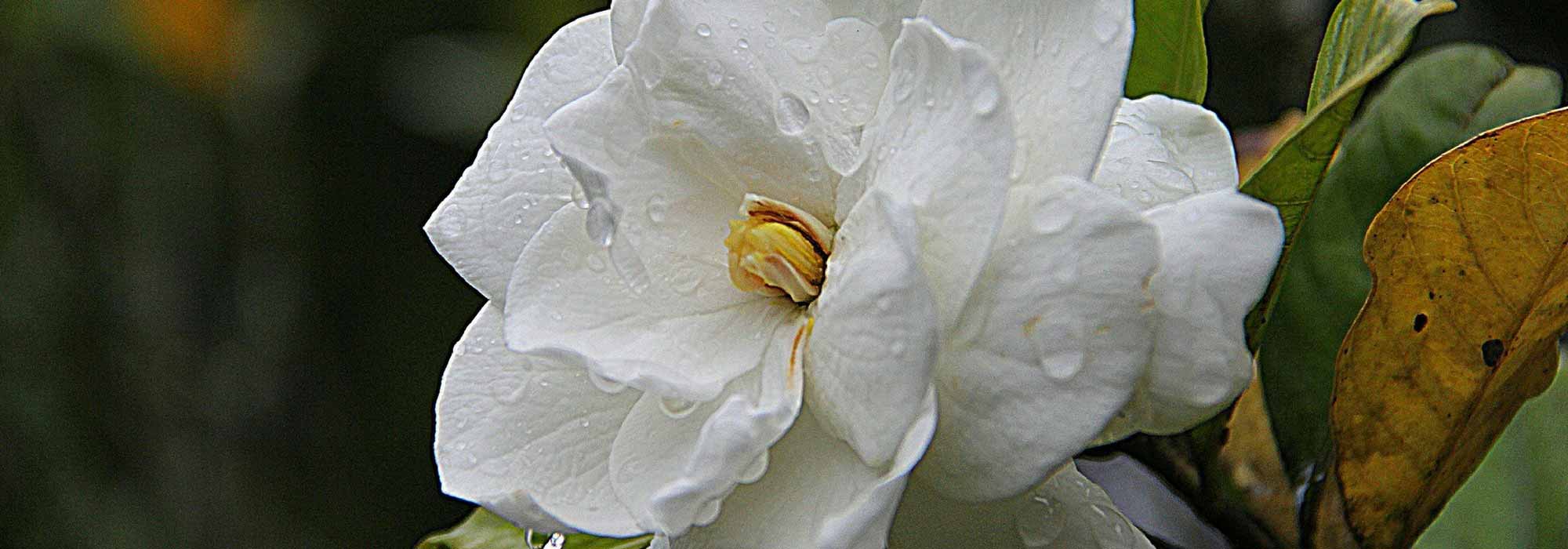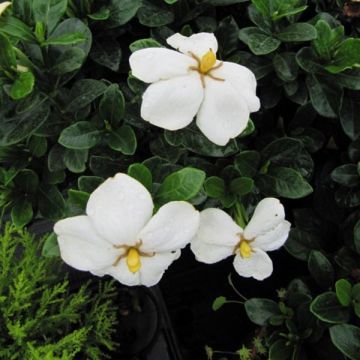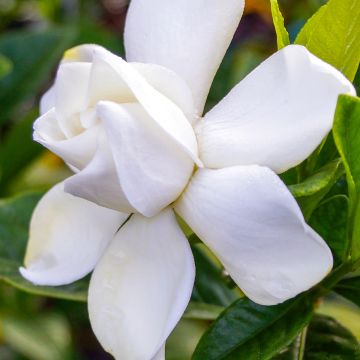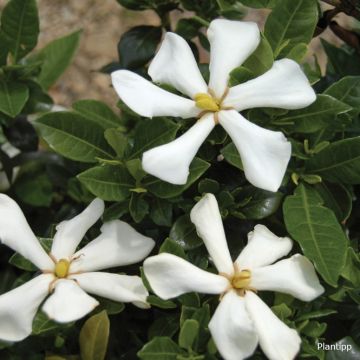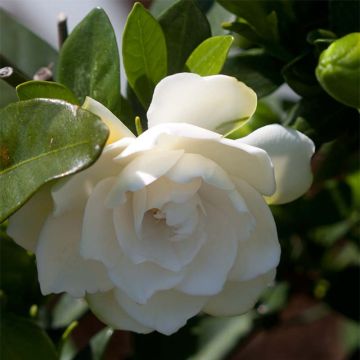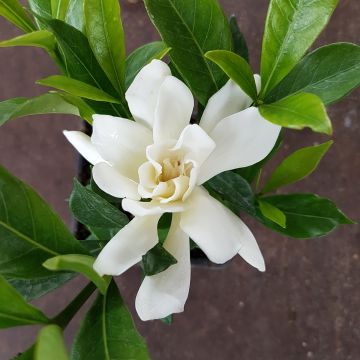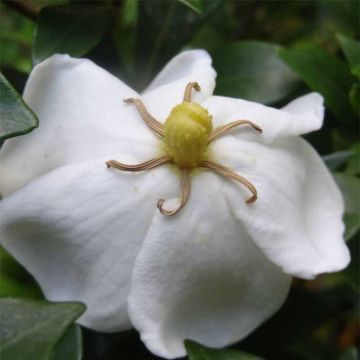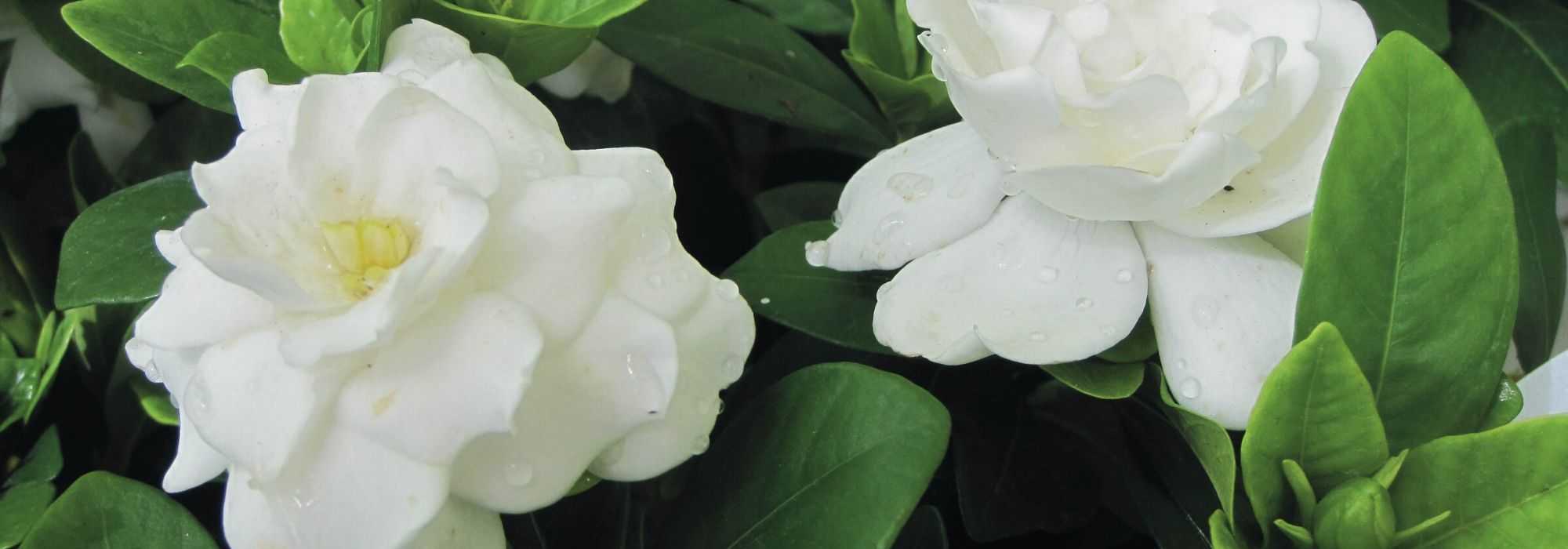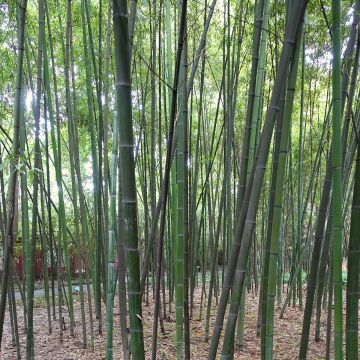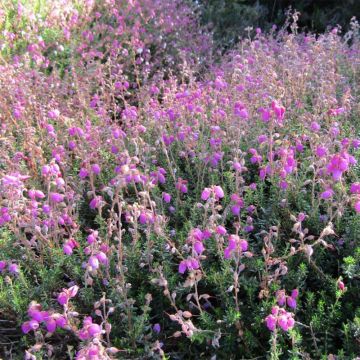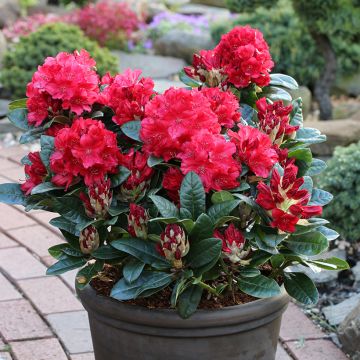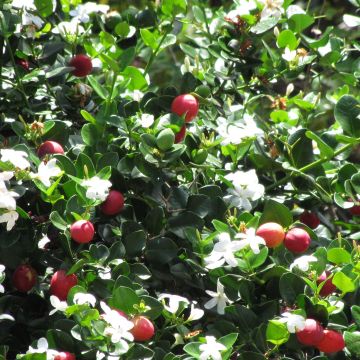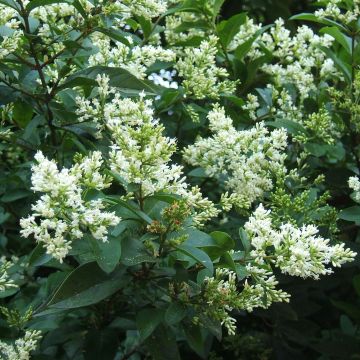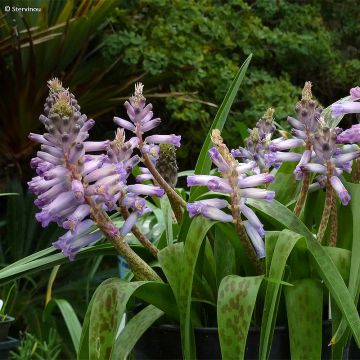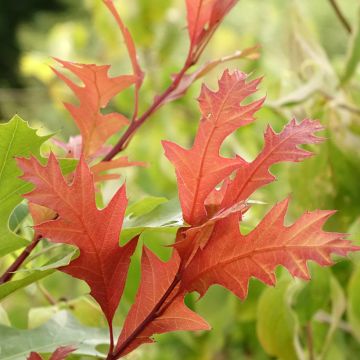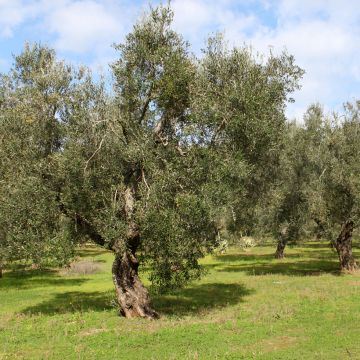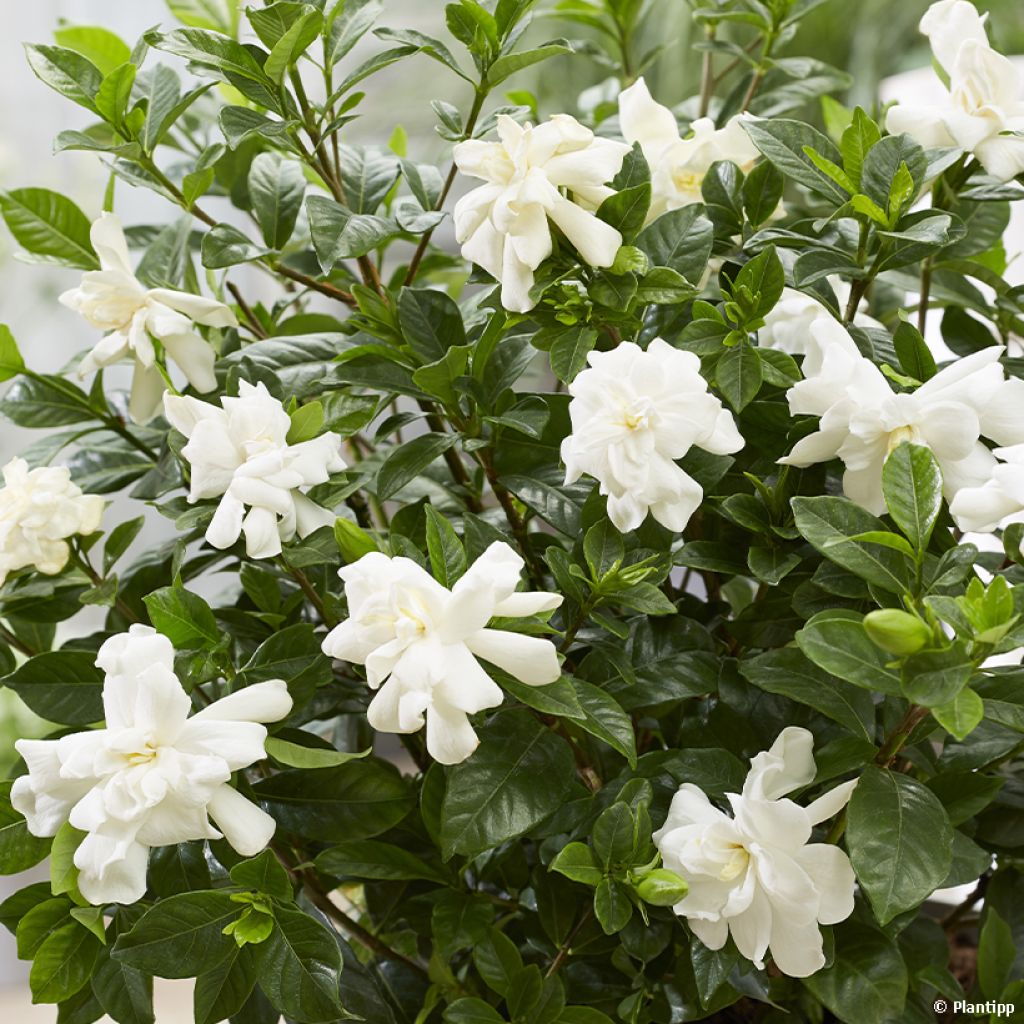

Gardenia jasminoides Double Diamonds
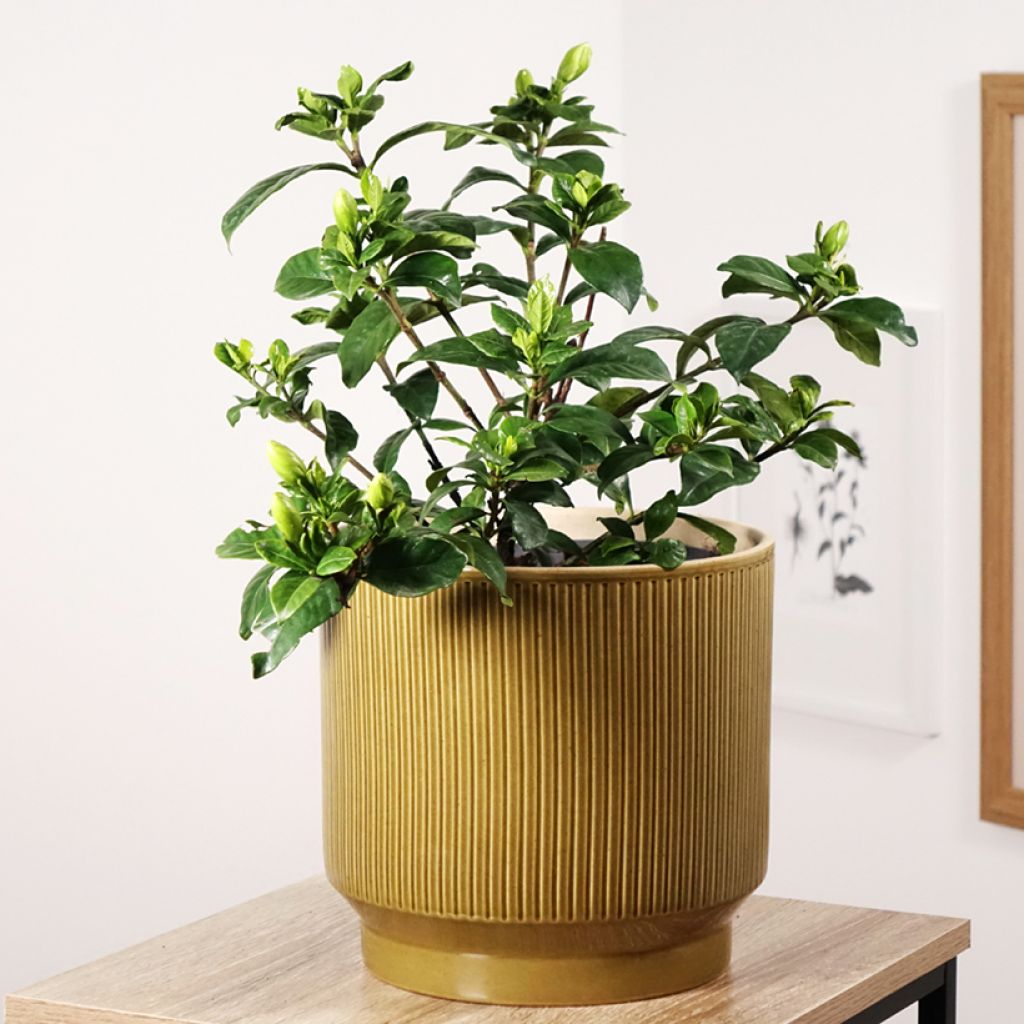

Gardenia jasminoides Double Diamonds
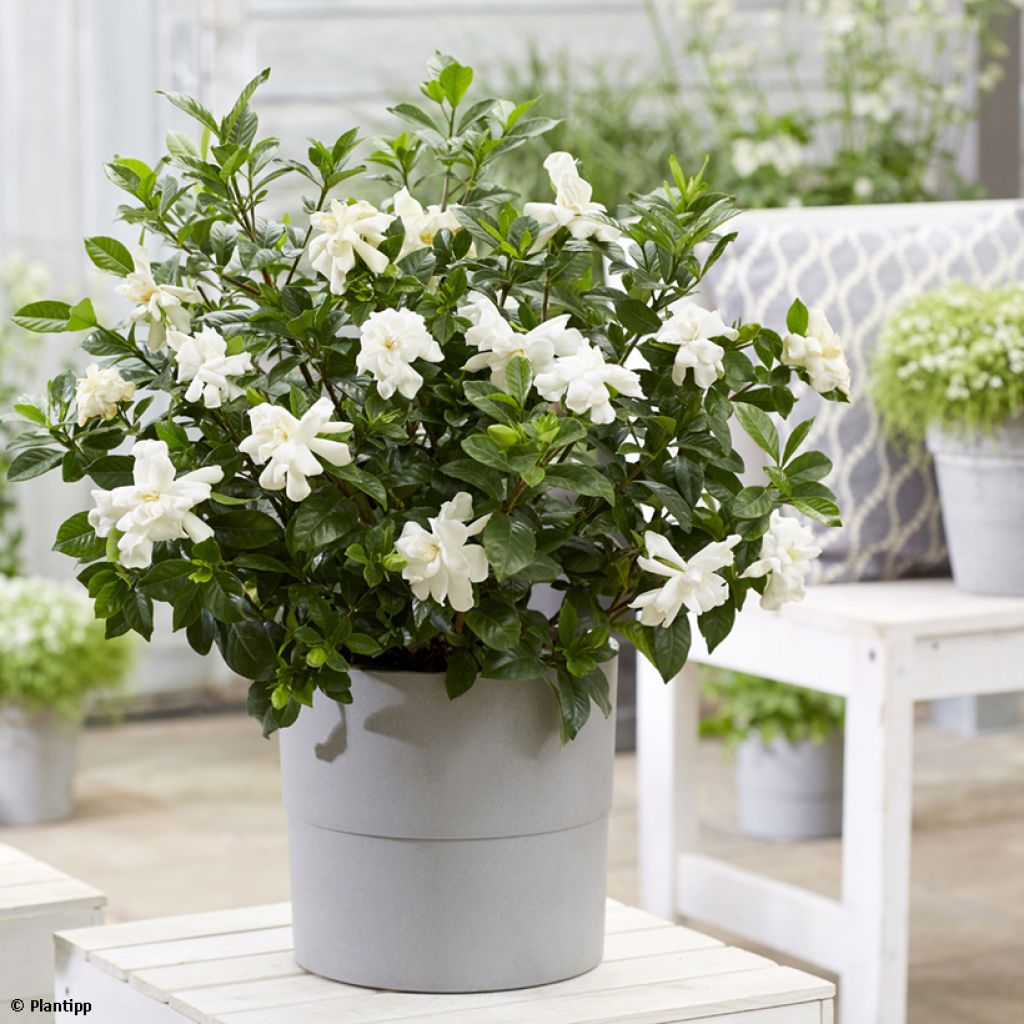

Gardenia jasminoides Double Diamonds
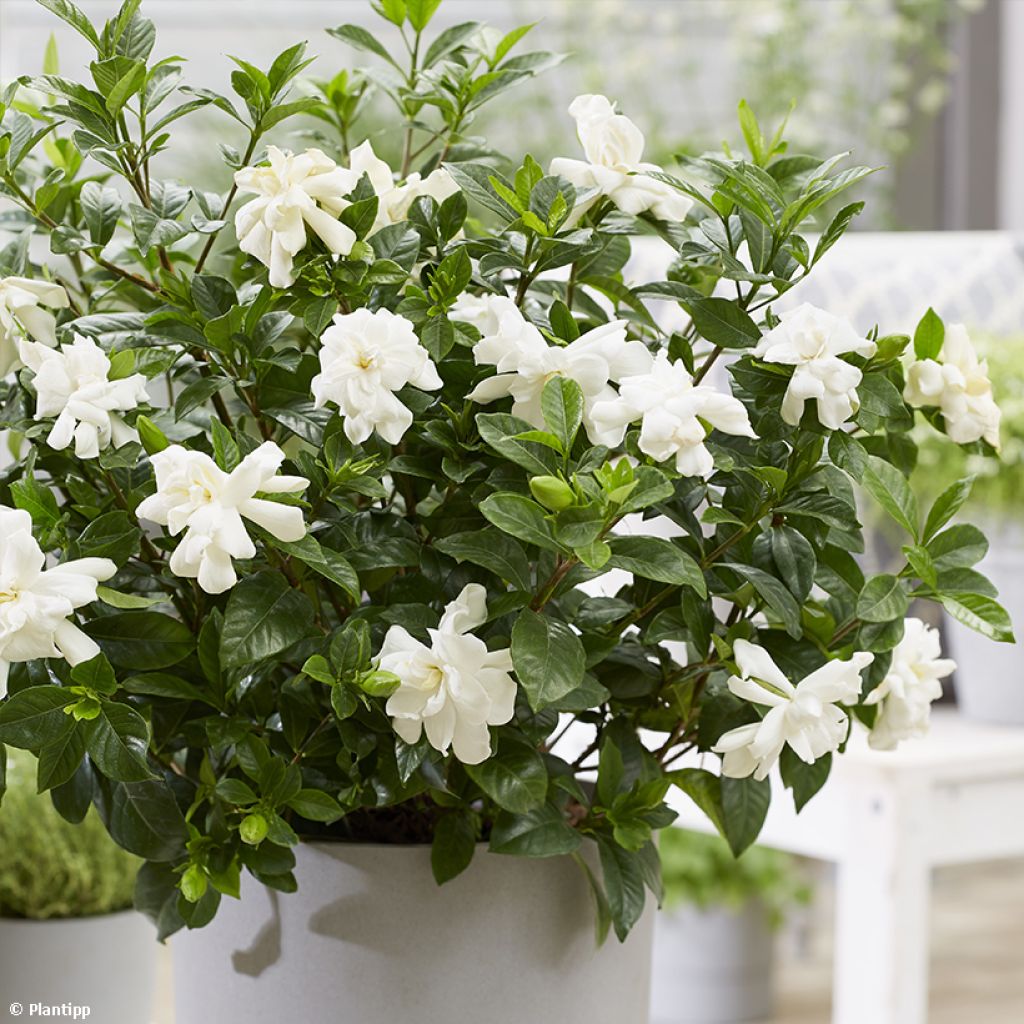

Gardenia jasminoides Double Diamonds
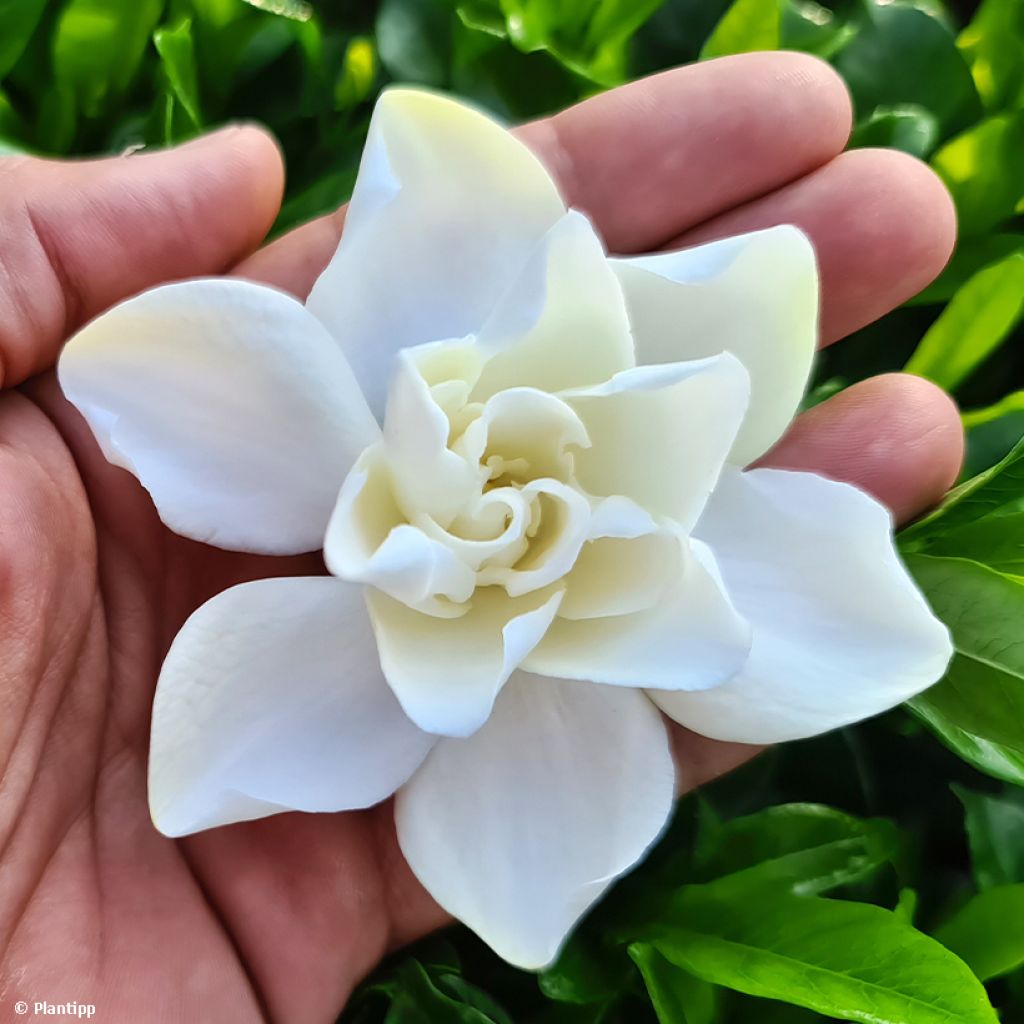

Gardenia jasminoides Double Diamonds
Gardenia jasminoides Double Diamonds
Gardenia jasminoides Double Diamonds ('Leefour'PBR)
Cape Jasmine, Common Gardenia
Lovely young plant arrived early. Flower buds and a subtle fragrance. Hoping for good recovery and healthy growth...
Isa, 18/06/2025
Special offer!
Receive a €20 voucher for any order over €90 (excluding delivery costs, credit notes, and plastic-free options)!
1- Add your favorite plants to your cart.
2- Once you have reached €90, confirm your order (you can even choose the delivery date!).
3- As soon as your order is shipped, you will receive an email containing your voucher code, valid for 3 months (90 days).
Your voucher is unique and can only be used once, for any order with a minimum value of €20, excluding delivery costs.
Can be combined with other current offers, non-divisible and non-refundable.
Home or relay delivery (depending on size and destination)
Schedule delivery date,
and select date in basket
This plant carries a 24 months recovery warranty
More information
We guarantee the quality of our plants for a full growing cycle, and will replace at our expense any plant that fails to recover under normal climatic and planting conditions.
Does this plant fit my garden?
Set up your Plantfit profile →
Description
Gardenia jasminoides Double Diamonds is one of the hardiest varieties of Cape Jasmine, which can be grown in the ground in a large part of Europe. With its compact size, it can be grown in containers outdoors elsewhere, and then be brought indoors during the cold season. Its beautiful glossy dark green foliage highlights its superb white flowering, composed of double star-shaped blooms. Blooming throughout the summer, it exhales a powerful fragrance similar to Jasmine. This small shrub with an exotic appearance requires a moist, neutral to acidic soil and protection against harsh sunlight.
Gardenia belongs to the large family of Rubiaceae, which includes 600 genera and more than 10,000 species, spread across the entire planet, from cold zones to tropical regions. The Gardenia genus itself includes several dozen species distributed in the subtropical and tropical belt of the globe. Gardenia jasminoides is native to China and southern Japan, where it forms shrubs or small trees reaching a height of 5 m (16 ft 5 in). Its foliage is evergreen, and its large flowers, 6 to 10 cm (2.4 to 3.9 in) in diameter, are solitary or sometimes grouped in threes at the end of branches.
'Double Diamonds' is an American variety that is much more compact than the botanical species, as it reaches only 90 cm (35.4 in) in height, with a width of about 70 cm (27.6 in). Its growth is slow and generally well-balanced, so it does not require any pruning, naturally forming a dense tuft. Its dark green elliptical leaves have a glossy surface that is very attractive. They provide a perfect backdrop for a sumptuous immaculate white flowering that contrasts sharply with the dark background of the vegetation. Highly decorative, the flowers measure from 6 to 8 cm (2.4 to 3.1 in) in diameter and have a particularly aesthetic pattern. Fully double, they are composed of star-shaped outer petals, and inner petals that gracefully curl around the heart.
However, their beauty is surpassed by their fragrance, particularly powerful, similar to that of Jasmine although more heady and even intoxicating on hot summer evenings. Therefore, it is advisable not to plant this small shrub directly under the window of a bedroom, but rather to place it near a terrace. The exceptional flowering is also distinctive by its length, from July to September.
This Cape Jasmine has good hardiness, being able to withstand freezing temperatures down to -12 °C, under appropriate conditions. Cold resistance is always indicative, considering that the effects of frost are aggravated by poor conditions such as exposure to winter winds, excessive shade in the cold season, poorly-drained soil... On the other hand, even though the roots can withstand freezing temperatures well, this does not prevent the leaves from becoming marked from around -6 °C (21.2 °F), and even partially falling from around -8 °C (17.6 °F). Vegetation will then resume in spring, but to avoid reaching this point, it is advisable to protect the shrub with a non-woven fleece during periods of regular frost.
If you choose to cultivate it in a pot, which is perfectly possible, it will even need to be brought indoors before reaching these temperatures, as it does not benefit from the thermal inertia of the soil and will suffer more from frost.
Gardenia Double Diamonds is a plant with a tropical appearance that enthusiasts appreciate to create a dreamy corner in the garden. In mild climates without extremes, you can associate it with other distinctive plants such as Japanese Banana (Musa basjoo) with its large leaves and fiercely tropical appearance, although it is significantly hardier than our little Gardenia. Fatsia japonica, or False Aralia, with its large, glossy green, palmate leaves will also be a very good companion to complement an exotic scene.
Gardenia jasminoides Double Diamonds in pictures
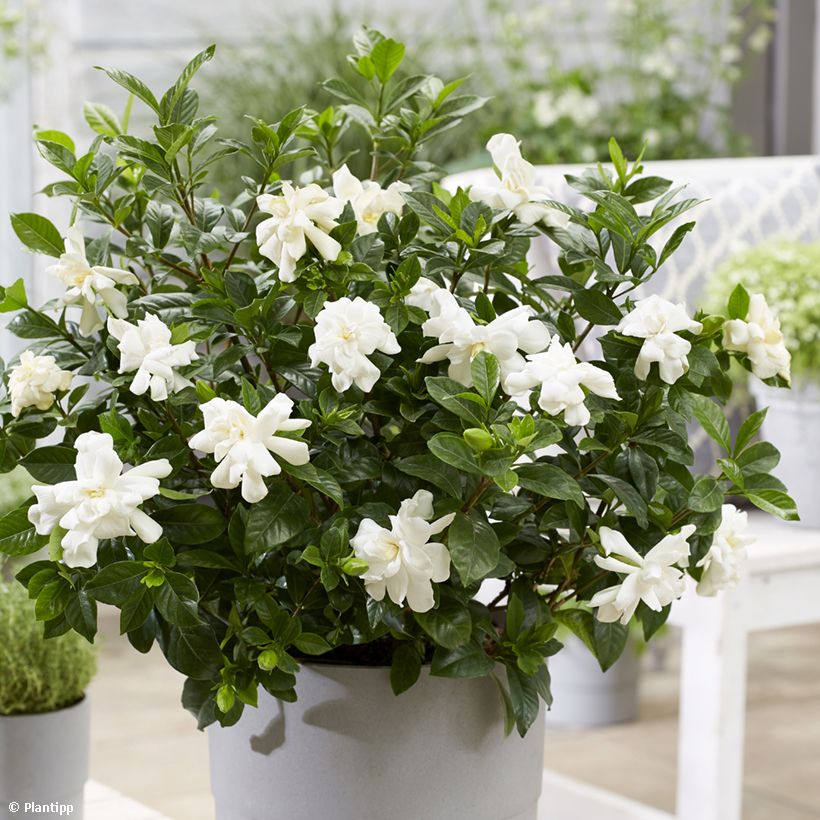

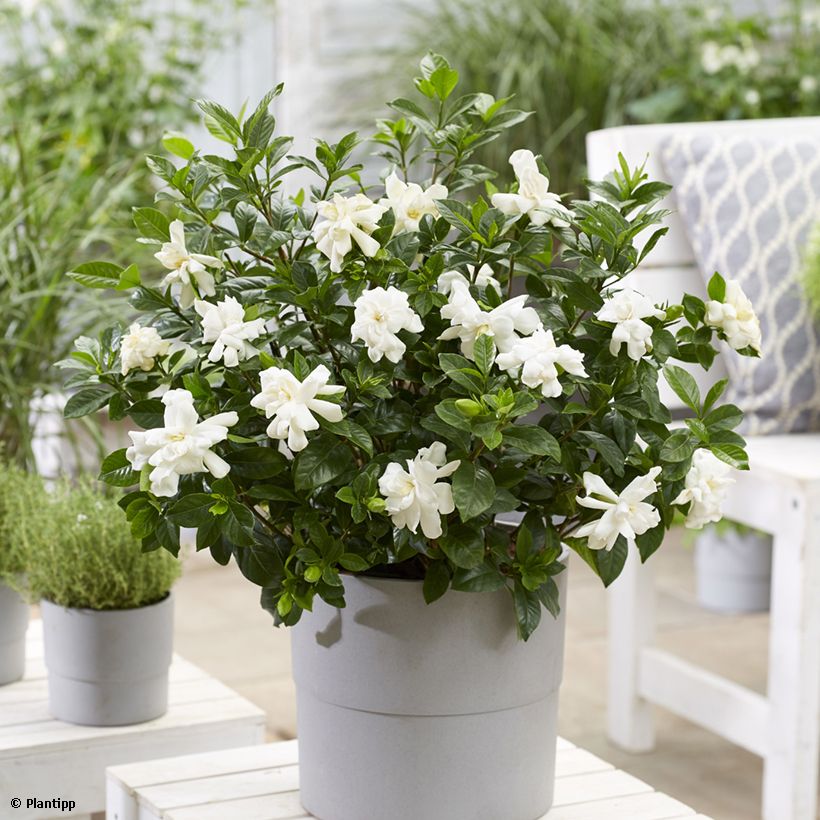

Plant habit
Flowering
Foliage
Botanical data
Gardenia
jasminoides
Double Diamonds ('Leefour'PBR)
Rubiaceae
Cape Jasmine, Common Gardenia
Cultivar or hybrid
Other Gardenia
View all →Planting and care
Plant Gardenia jasminoides Double Diamonds in a semi-shaded bed, in neutral to acidic soil (it suffers from chlorosis in lime-rich soil), rich in humus, moist and well-drained. The choice of exposure is important, as Gardenia loves heat (not drought) and the harsh rays of the sun can scorch its foliage. It will tolerate morning sun but appreciates filtered shade in the afternoon. Dig a hole of 50 cm (19.7 in) in all directions, and add slightly acidic planting compost (pH 6) to the existing soil. Soak the root ball in a bucket for 10 minutes and then place it in the hole, backfill around it and water thoroughly. During the growing season, especially in summer, make sure the soil does not dry out. In autumn, space out watering and stop when the temperatures drop significantly. This shrub almost has the same growing requirements as camellias.
In climates that are too cold to grow it outdoors, its compact size allows for easy cultivation in containers, to be brought indoors for winter protection.
Planting period
Intended location
Care
Planting & care advice
-
, onOrder confirmed
Reply from on Promesse de fleurs
Similar products
Haven't found what you were looking for?
Hardiness is the lowest winter temperature a plant can endure without suffering serious damage or even dying. However, hardiness is affected by location (a sheltered area, such as a patio), protection (winter cover) and soil type (hardiness is improved by well-drained soil).

Photo Sharing Terms & Conditions
In order to encourage gardeners to interact and share their experiences, Promesse de fleurs offers various media enabling content to be uploaded onto its Site - in particular via the ‘Photo sharing’ module.
The User agrees to refrain from:
- Posting any content that is illegal, prejudicial, insulting, racist, inciteful to hatred, revisionist, contrary to public decency, that infringes on privacy or on the privacy rights of third parties, in particular the publicity rights of persons and goods, intellectual property rights, or the right to privacy.
- Submitting content on behalf of a third party;
- Impersonate the identity of a third party and/or publish any personal information about a third party;
In general, the User undertakes to refrain from any unethical behaviour.
All Content (in particular text, comments, files, images, photos, videos, creative works, etc.), which may be subject to property or intellectual property rights, image or other private rights, shall remain the property of the User, subject to the limited rights granted by the terms of the licence granted by Promesse de fleurs as stated below. Users are at liberty to publish or not to publish such Content on the Site, notably via the ‘Photo Sharing’ facility, and accept that this Content shall be made public and freely accessible, notably on the Internet.
Users further acknowledge, undertake to have ,and guarantee that they hold all necessary rights and permissions to publish such material on the Site, in particular with regard to the legislation in force pertaining to any privacy, property, intellectual property, image, or contractual rights, or rights of any other nature. By publishing such Content on the Site, Users acknowledge accepting full liability as publishers of the Content within the meaning of the law, and grant Promesse de fleurs, free of charge, an inclusive, worldwide licence for the said Content for the entire duration of its publication, including all reproduction, representation, up/downloading, displaying, performing, transmission, and storage rights.
Users also grant permission for their name to be linked to the Content and accept that this link may not always be made available.
By engaging in posting material, Users consent to their Content becoming automatically accessible on the Internet, in particular on other sites and/or blogs and/or web pages of the Promesse de fleurs site, including in particular social pages and the Promesse de fleurs catalogue.
Users may secure the removal of entrusted content free of charge by issuing a simple request via our contact form.
The flowering period indicated on our website applies to countries and regions located in USDA zone 8 (France, the United Kingdom, Ireland, the Netherlands, etc.)
It will vary according to where you live:
- In zones 9 to 10 (Italy, Spain, Greece, etc.), flowering will occur about 2 to 4 weeks earlier.
- In zones 6 to 7 (Germany, Poland, Slovenia, and lower mountainous regions), flowering will be delayed by 2 to 3 weeks.
- In zone 5 (Central Europe, Scandinavia), blooming will be delayed by 3 to 5 weeks.
In temperate climates, pruning of spring-flowering shrubs (forsythia, spireas, etc.) should be done just after flowering.
Pruning of summer-flowering shrubs (Indian Lilac, Perovskia, etc.) can be done in winter or spring.
In cold regions as well as with frost-sensitive plants, avoid pruning too early when severe frosts may still occur.
The planting period indicated on our website applies to countries and regions located in USDA zone 8 (France, United Kingdom, Ireland, Netherlands).
It will vary according to where you live:
- In Mediterranean zones (Marseille, Madrid, Milan, etc.), autumn and winter are the best planting periods.
- In continental zones (Strasbourg, Munich, Vienna, etc.), delay planting by 2 to 3 weeks in spring and bring it forward by 2 to 4 weeks in autumn.
- In mountainous regions (the Alps, Pyrenees, Carpathians, etc.), it is best to plant in late spring (May-June) or late summer (August-September).
The harvesting period indicated on our website applies to countries and regions in USDA zone 8 (France, England, Ireland, the Netherlands).
In colder areas (Scandinavia, Poland, Austria...) fruit and vegetable harvests are likely to be delayed by 3-4 weeks.
In warmer areas (Italy, Spain, Greece, etc.), harvesting will probably take place earlier, depending on weather conditions.
The sowing periods indicated on our website apply to countries and regions within USDA Zone 8 (France, UK, Ireland, Netherlands).
In colder areas (Scandinavia, Poland, Austria...), delay any outdoor sowing by 3-4 weeks, or sow under glass.
In warmer climes (Italy, Spain, Greece, etc.), bring outdoor sowing forward by a few weeks.






























